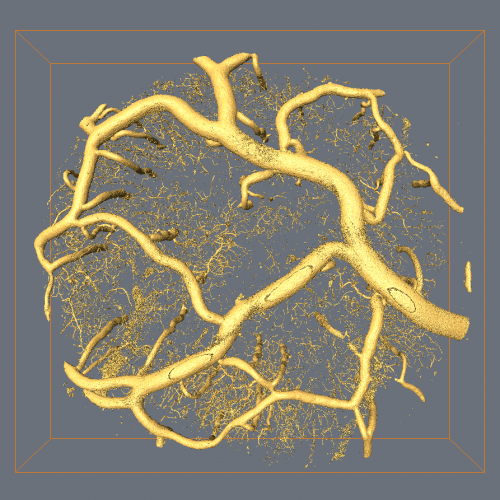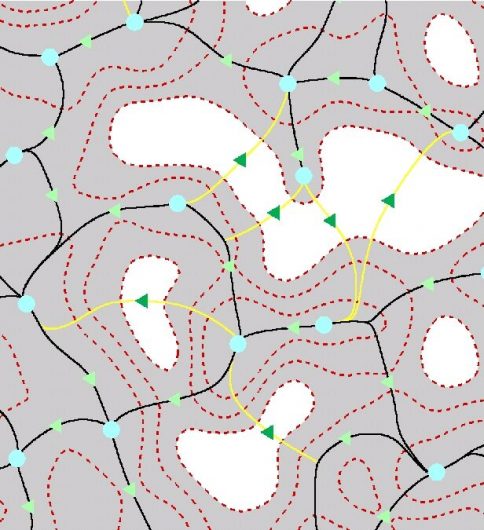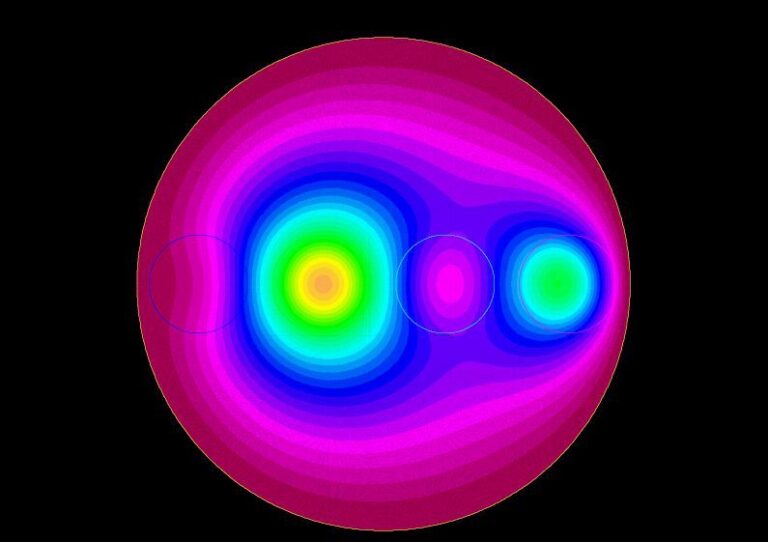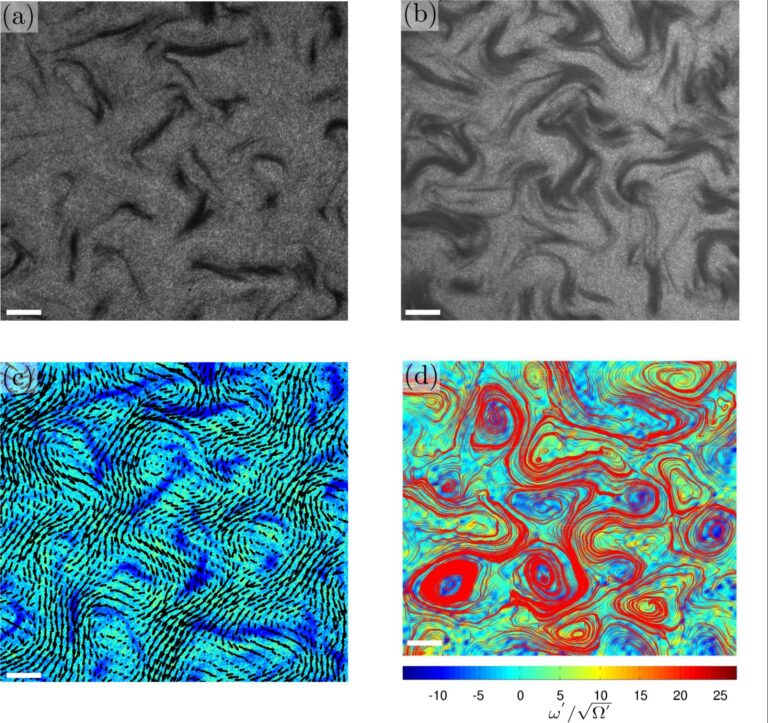@article{oatao5502,
title = {Fluctuation dynamics of a single magnetic chain},
author = {Adriana S. Silva and Robert Bond and Franck Plouraboué and Denis Wirtz},
url = {https://oatao.univ-toulouse.fr/5502/},
doi = {10.1103/PhysRevE.54.5502},
year = {1996},
date = {1996-01-01},
urldate = {1996-01-01},
journal = {Physical Review E},
volume = {54},
number = {5},
pages = {5502--5510},
publisher = {American Physical Society},
abstract = {"Tunable" fluids such as magnetorheological "MR" and electrorheological "ER" fluids are comprised of paramagnetic or dielectric particles suspended in a low-viscosity liquid. Upon the application of a magnetic or electric field, these fluids display a dramatic, reversible, and rapid increase of the viscosity. This change in viscosity can, in fact, be tuned by varying the applied field, hence the name "tunable fluids". This effect is due to longitudinal aggregation of the particles into chains in the direction of the applied field and the subsequent lateral aggregation into larger semisolid domains. A recent theoretical model by Halsey and Toor "HT" explains chain aggregation in dipolar fluids by a fluctuation-mediated long-range interaction between chains and predicts that this interaction will be equally efficient at all applied fields. This paper describes video-microscopy observations of long, isolated magnetic chains that test HT theory. The measurements show that, in contrast to the HT theory, chain aggregation occurs more efficiently at higher magnetic field strength (H0) and that this efficiency scales as H0?. Our experiments also yield the steady-state and time-dependent ?uctuation spectra C(x,x')? [h(x)-h(x')]?ensuremath>? and C(x,x',t,t')? ensuremath<[h(x,t)-h(x',t')]? ensuremath>? for the instantaneous deviation h(x,t) from an axis parallel to the ?eld direction to a point x on the chain. Results show that the steady-state ?uctuation growth is similar to a biased random walk with respect to the interspacing ? ensuremath|x-x'ensuremath| along the chain, C(x,x')$approx$ensuremath|x-x'ensuremath| ensuremathalpha, with a roughness exponent ensuremathalpha =0.53$pm$0.02. This result is partially confirmed by Monte Carlo simulations. Time-dependent results also show that chain relaxation is slowed down with respect to classical Brownian diffusion due to the magnetic chain connectivity, C(x,x',t,t')$approx$ensuremath|t-t'ensuremath|ensuremathbeta, with a growth exponent ensuremathbeta=0.35$pm$0.05ensuremath<?. All data can be collapsed onto a single curve according to C(x,x',t,t')$approx$ensuremath|x-x'ensuremath| ensuremathalpha ensuremathpsi (ensuremath|t-t'ensuremath| / ensuremath|x-x'ensuremath| z ), with a dynamic exponent z= ensuremathalpha /ensuremathbeta? 1.42.},
keywords = {},
pubstate = {published},
tppubtype = {article}
}







